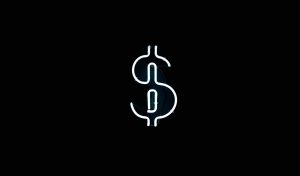 Individuals and businesses named in qui tam lawsuits alleging fraud against the government based on the False Claims Act (FCA) have always been at risk for significant financial penalties. If the federal government decides to join the qui tam action against the defendants, this is a sign of a great deal of evidence in the government’s favor. A court ruling against some or all of the defendants or a settlement between them and the government is bound to follow. However, since mid-2016, the financial risk for these defendants has been even higher as the minimum and maximum civil penalties increased. Along with continued enforcement, this could mean the U.S. receives an even greater amount from FCA cases in the 2017 fiscal year.
Individuals and businesses named in qui tam lawsuits alleging fraud against the government based on the False Claims Act (FCA) have always been at risk for significant financial penalties. If the federal government decides to join the qui tam action against the defendants, this is a sign of a great deal of evidence in the government’s favor. A court ruling against some or all of the defendants or a settlement between them and the government is bound to follow. However, since mid-2016, the financial risk for these defendants has been even higher as the minimum and maximum civil penalties increased. Along with continued enforcement, this could mean the U.S. receives an even greater amount from FCA cases in the 2017 fiscal year.
FCA Claims are Taken Seriously
Under the Obama Administration, qui tam and FCA claims were taken seriously. The U.S. Department of Justice (DOJ) recovered more than $4.7 billion from FCA cases in the 2016 fiscal year. As we transition into the Trump Administration and Attorney General Sessions gets to work, it appears as if heavy FCA enforcement will continue. Democrats and Republicans both agree with finding and prosecuting fraud against the government, and Sessions has agreed he will make recovering fraudulently obtained monies a high priority.
FCA Civil Penalties are Significant
An interim final rule published in June 2016 essentially doubled the minimum and maximum penalties allowed under the FCA. This was a result of Section 701 of the Bipartisan Budget Act of 2015, which required all federal agencies to update their civil monetary penalties each year based on cost-of-living adjustments. The change was necessary since many agencies had not increased their penalties for multiple years, essentially making the current penalties worth less than they had been worth a few years before due to inflation.
Now, for each individual false claim, which could mean every incorrect invoice sent to the government, the penalty can range from $11,000 to $21,563. Previously, the maximum penalty was $10,781.
Keep in mind that these are only the civil penalties that can be calculated from an FCA claim. The law also entitles the government to damages, which are calculated as three times the amount of money lost to the government.
Potential Consequences of Higher Penalties
There may be a number of effects from these increased penalties. Potential qui tam relators have a greater inducement to step forward with claims. The higher the final judgement or settlement, the greater the amount the relator will receive.
The higher penalties may also change a defendant’s defense or settlement strategy. Individuals or businesses may wish to settle with the government rather than to risk a judgment of the maximum penalty and damages allowed under the law.
Do You Have Information About Fraud Against the Federal Government?
If you work for a business you believe is purposefully incorrectly invoicing the government in order to receive or retain money, then you may have the ability to bring a qui tam case on the government’s behalf. Being a whistleblower can be difficult. However, the potential benefit may be worth it if there is strong evidence of wrongdoing. Contact a San Francisco qui tam lawyer of Brod Law Firm at (800) 427-7020 to schedule a free consultation and learn more about your options.
(image courtesy of Jimi Filipovski)
 Healthcare Fraud Lawyer Blog
Healthcare Fraud Lawyer Blog


